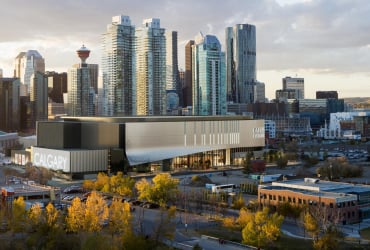Another year, another crisis.
For Justin Trudeau, it has become something of a routine.
Of his six years as prime minister, only one, the first, has been what could be considered a normal year of government, with the usual ups and downs.
His first term was disrupted in the second year by the potentially dire election of Donald Trump south of the border.
His second had just begun when COVID-19 wreaked havoc on the planet.
And now he is heading into the first full year of his third term in the face of what public health experts fear will be the worst wave of the pandemic yet, fueled by the highly contagious variant of Omicron.
And that’s not the only crisis facing his minority liberal government. There’s the climate crisis, the inflation crisis, the affordable housing crisis, the labor shortage crisis, the debt crisis, even a crisis of national unity, according to conservatives.
What people are reading

With Trudeau about to turn 50 on Christmas Day, or about to commemorate “the twentieth anniversary of turning 30,” as he likes to think, some liberals privately predict that next year will be the one in which he decides he has already had enough. that it is time to let someone else deal with the constant upheaval.
Trudeau himself insists that he intends to bring the Liberals to the next election, whenever they come. But the question arises, given the unprecedented challenges ahead and behind: why would you want to?
In a year-end interview with the Ottawa bureau of The Canadian Press, Trudeau acknowledged that his tenure thus far has been a relentless series of crises.
@JustinTrudeau, beset by a series of crises as prime minister, 2022 promises to be no different. #CDNPoli
But it has also been “an extraordinary privilege to be able to serve Canadians who are so focused on being able to do the right things and overcome these crises.”
What motivates him now, he said, is imagining what can be achieved if the tools developed to overcome the past difficult years are applied to things like climate change, housing, reconciliation with indigenous peoples, and generally “the building a better future for Canadians. ” “
“What we have been able to develop as tools to be there for Canadians in incredibly difficult times will allow us to do more and faster and better for Canadians in the years to come once we get through these (current crises),” Trudeau said.
“That is something that really excites me and I am looking forward to facing the challenges that the next few years will bring.”
Trudeau seems to have adopted a sense of urgency for his second consecutive minority government, determined to get things done in no time. He ignored suggestions that he is focused on building a legacy or trying to make up for lost time.
Rather, he said the onset of the pandemic demonstrated that the government can move at lightning speed in a crisis to deliver programs that make a tangible difference in the lives of Canadians. The challenge now is to apply that same “habit of mind” to other priorities.
During the brief four weeks of the new parliamentary session before the Christmas holidays, his government managed to meet its four immediate legislative priorities. With the cooperation of opposition parties, he was able to pass bills banning conversion therapy for LGBTQ Canadians, implementing new, more targeted pandemic relief programs, cracking down on harassment and intimidation of healthcare workers. and creating 10 days of paid sick leave. for federally regulated workers.
The willingness of opposition parties to collaborate suggests that Trudeau could keep his foot on the gas, at least in the short term.
At the very least, his minority government appears relatively stable and he shouldn’t have to worry about being defeated in a vote of confidence anytime soon. Having campaigned bitterly against Trudeau’s decision to call elections last summer amid the fourth wave of COVID-19, it would seem insane for any opposition party to topple the government amid an even more rampant fifth wave. .
But the appearance of Omicron may still turn the new year, and Trudeau’s schedule, backwards again.
It boasts that Canada’s economy has recovered faster and faster than most of its peer countries due to the hundreds of billions its government invested in pandemic aid programs to keep Canadians and businesses afloat.
But that recovery is fragile and could easily be undone, says economist Armine Yalnizyan. While Canada has regained all the jobs lost during the first wave of the pandemic, there has been a decline in the quality of jobs and an inexplicable loss of women ages 55 to 64 from the workforce. And there are many “zombie businesses” that have essentially been kept alive by government aid programs.
If Omicron leads to another round of lockdowns and triggers another recession, it says, “We’re starting worse than before.”
Omicron threatens to intensify strangled supply chains, labor shortages and deficits, not to mention the strain on an already burned-out healthcare system. None of that, Yalnizyan says, is under the control of the federal government, but it will have to “offset the impact of those things.”
As she sees the bigger picture, the Trudeau government “heads into 2022 with a debate about what the role of government is in its hands, how big should its presence be.”
For the past 40 years, Yalnizyan says, the federal government has shifted responsibility to the provinces and relied on a nose for “more markets, less government.”
Now, “all the provinces have liquidity problems, all the electorates in all these provinces need more from their governments, the markets cannot fix what ails us right now (because) the markets are the ones that are suffering.”
Consequently, he says, “We’re seeing a reversal of the general narratives of our day and how these guys handle it is at stake. I don’t know how they’re going to handle it.”
This Canadian Press report was first published on December 23, 2021.
Reference-www.nationalobserver.com